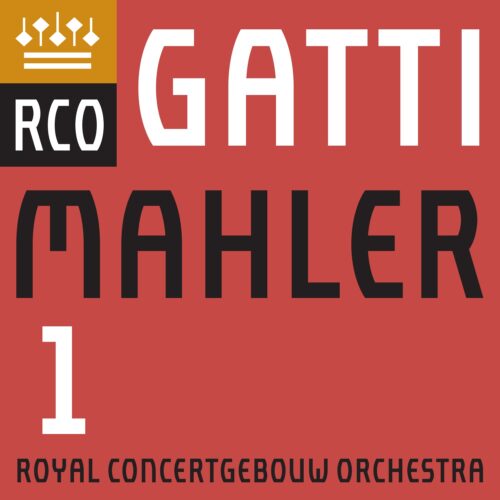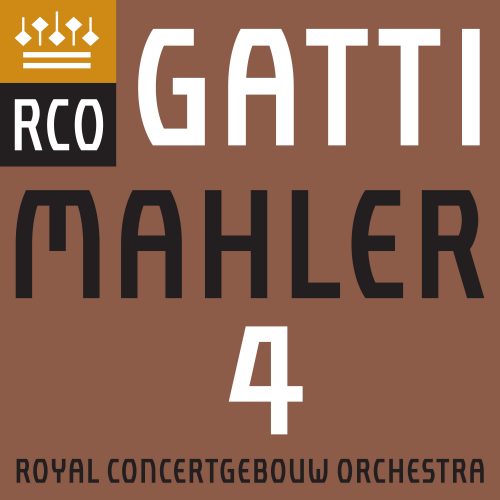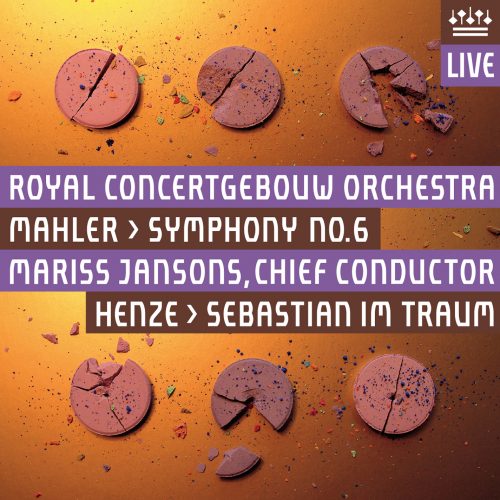When conducting Mahler, Gatti tries to strike a balance between precision and imagination. He makes a thorough study of all Mahler’s markings in the score, but also uses his own creativity to enhance and enrich his musical interpretation. An often cited example is the beginning of the third movement, an ironic funeral march inspired by a print depicting a group of wild animals in the forest ‘paying homage’ to a fallen hunter. A version of ‘Frère Jacques’ in minor mode is heard in the double basses, followed in succession by the first bassoon, cellos and bass tuba. While most conductors have the principal double bassist play the initial theme as a solo, Gatti deliberately has the whole double bass section play this parody of the children’s song. Eager to explain why, he says, ‘Although Mahler does write the word “solo” in capitals over the first notes in the double bass part, the word “tutti” is missing later when it’s obvious that the whole section should be playing. So why leave it out? I think he actually means that the double bass section should play the theme in a manner befitting a soloist. Had he wanted only one instrument to play the melody, he most certainly would have used a different indication in the score. Later in the movement, for instance, he first calls for a solo viola, clearly indicating a few bars later that all the violas should join in.
‘I also wondered why the “Frère Jacques” melody in the double bass is marked by a comma after each bar, but right after that, Mahler scores the melody for other instruments with no commas at all. In my imagination, I see the commas as representing the animals first having to learn the song phrase by phrase. A solo double bassist could have been the choir conductor, but with the entire section, I see all the animals learning the song together in my mind’s eye. And eventually, the solo bassoon is the first to pluck up the courage to make a real start.’
A major challenge in the First Symphony, as in many of Mahler’s later orchestral works, is the unexpected and sometimes bizarre way in which musical clichés are scored. Even in the introduction to the first movement, Mahler entrusts the first fanfare not to the trumpets, as one would expect, but to the clarinets, and in too low a register at that. After the funeral march in the third movement, a series of melodies is heard in the winds, reminiscent of wandering klezmer musicians. Mahler explicitly writes “Mit Parodie” [with parody] at rehearsal number 6 in the score, a marking Gatti is mindful of in his choice of tempo: ‘Mahler could easily have written “Vorwärts” [forward] or “Più mosso” [more quickly], but instead he chooses the less imperative indication “Nicht schleppen” [do not drag]. That’s why I take a somewhat slower tempo here than many of my colleagues do. It helps improve articulation and lets me bring out the distortion that plays such a crucial role in Mahler’s music.’ Only in the final movement does it become clear where the previous succession of calm, cheerful, rustic, wrenching and hopeful gestures should lead. The last movement is closely related to the first, which Mahler emphasises by returning to the static introduction. Man, entrenched in a battle with himself and with the world, will win a resounding victory thanks to nature. The long final movement is based on the Beethovenian dynamic of per aspera ad astra (‘through hardships to the stars’). The deafening blow heard in the opening bars seems to come straight from hell. Breakthroughs and setbacks follow, but with the triumphant final chorale, we reach paradise – or, at least, Mahler’s version of it.
– Michel Khalifa (excerpt from Liner Notes)
Tracklist
Please note that the below previews are loaded as 44.1 kHz / 16 bit.Total time: 00:57:08
Additional information
| Label | |
|---|---|
| SKU | RCO18005 |
| Qualities | |
| Channels | 2ch Stereo, 5 Channel Surround Sound, 2ch Stereo & 5ch Surround |
| Artists | |
| Composers | |
| Genres | |
| Speakers | Grimm Audio and B&W Nautilus speakers |
| Recording Type & Bit Rate | DXD |
| Recording location | Recorded Live at Concertgebouw Amsterdam on 10 and 11 January 2017 / 9 and 11 May 2018 |
| Recording Engineer | Everett Porter |
| Producer | Everett Porter |
| Microphones | Neumann and Schoeps with Polyhymnia custom electronics |
| Digital Converters | Horus, Merging Technologies |
| Original Recording Format | |
| Conductors | |
| Instruments | |
| Release Date | October 4, 2019 |
Only logged in customers who have purchased this product may leave a review.






Reviews
There are no reviews yet.